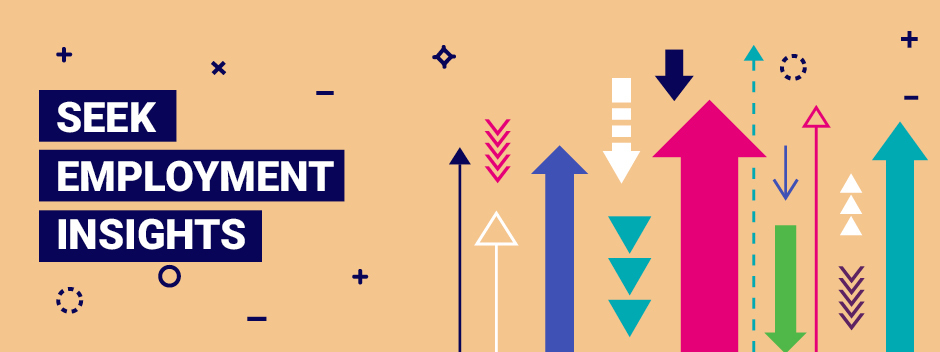Here’s a look at what’s happening in the job market, which industries have been hit hardest by lockdown and how Kiwis are feeling about their employment prospects and more.
Signs of recovery
SEEK data shows job advertising in the fortnight ending 28 June was at 57.1% of pre-COVID-19 levels (February 2020). “For jobseekers this is welcome news, as it’s a long way from the job data we saw during the lowest point of the pandemic, which was April 2020” says Janet Faulding, General Manager SEEK NZ.
There are positive signs in the regions, with the majority showing an increase in job ad volumes compared to pre-COVID-19.
Demand in all the main centres are all over half way back to pre-COVID levels:
- Wellington (63%)
- Canterbury (56%)
- Auckland (51%)
Hard-hit industries showing change
Many industries which were hit hard by lockdown have seen an uptick in job ad volumes as restrictions ease.
Here are the industries with the most job ads on site, and how job ad numbers compare to pre-COVID-19:
- Trades & Services (59%): roles such as Building Trades, Labourers and Automotive Trades
- Information & Communication Technology (54%): Developers/ Programmers, Business/ Systems Analysts, Software Engineering, Help Desk & IT Support and Project Management
- Healthcare & Medical (82%): Psychology, Counselling & Social Work and Nursing (Aged Care and General Medical), Physiotherapy, Dental and Medical Administration
- Manufacturing, Transport & Logistics (57%): Warehousing, Storage & Distribution, Machine Operators and Assembly & Process Work and Road Transport
- Construction (57%): Project Management, Foreperson/ Supervisors, Plant & Machinery Operators
Candidates feeling less uncertain
While the return of job ads is a positive sign, there’s still a long road to recovery ahead. Working situations are ‘back to normal’ for just 12% of people.
The easing of restrictions has meant candidates are feeling less uncertain than in May.
Research conducted on behalf of SEEK shows a slight improvement in the number of people who feel there aren’t enough jobs out there (49% in May vs. 43% in June) and on average, candidates are feeling more secure in their jobs than they did in previous months (71% in June vs. 66% in May).
How one NZ organisation navigated COVID-19
As one of New Zealand’s largest employers, Foodstuffs is made up of two regional co-operatives – Foodstuffs North Island and Foodstuffs South Island. Together, the retail and wholesale businesses employ 39,000 people nationwide.
Through the first few weeks of lockdown and as New Zealand transitioned through the Alert Level system, Foodstuffs saw an increase in demand on its stores, resulting in the need to hire short-term staff.
“This opened the door for us to bring in new team members and we worked with severely impacted sectors like tourism, hospitality, aviation and transportation businesses to redeploy 1,633 people into short-term roles in our business,” says Antoinette Laird, Foodstuffs’ head of corporate affairs and corporate social responsibility. Half of these re-deployed individuals still work with the business.
Setting up centralised recruiting
Recruitment for store-based staff usually sits locally, but during the pandemic, Foodstuffs set up a centralised recruitment function, generating a pool of talent that was then matched to roles within individual stores.
Laird says Foodstuffs’ talent acquisition teams were looking for transferable skills. “For our front-line staff, our teams were focused on recruiting for customer service and attention to detail, and for our distribution centres they were looking for forklift experience,” Laird says. “First and foremost, though, a can-do positive attitude was what was most essential during this time.”
Managing an increase in applications
Foodstuffs saw an increase in candidate applications, particularly for roles in their support centre and supply chain. This meant the organisation had to adjust its hiring process slightly. “We added a couple of extra steps to the early recruitment process, including increasing the detail of selection criteria and rolling out video interviewing capability,” Laird says.
While the employment market may be on a road to recovery, it’s still a long road ahead. For now, hiring remains one key area for organisations to focus on adapting – whether that’s by adjusting the hiring process or by identifying transferable skills in candidates.
Source: Independent research conducted by Nature on behalf of SEEK. Interviewing 4000 Kiwis annually.



